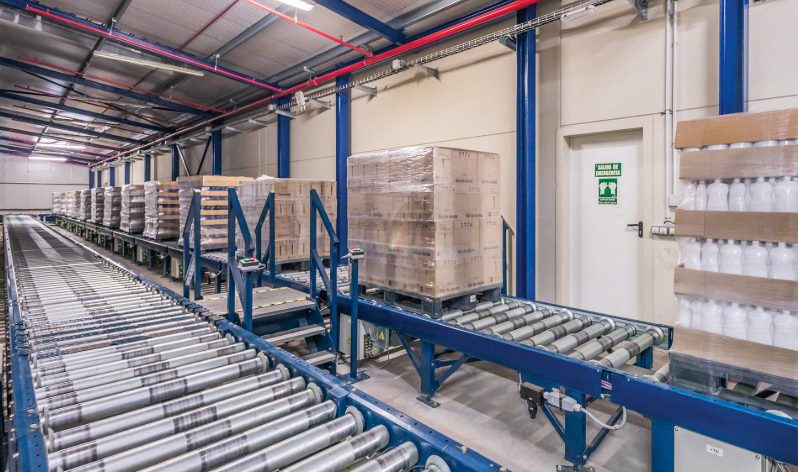Conveyor systems serve as the backbone of modern material handling, enabling efficient transportation of goods across manufacturing, logistics, and processing facilities. These systems have evolved from simple belt mechanisms to sophisticated automated networks capable of handling diverse product types with precision. The global conveyor market reached $8.9 billion in 2023, with projected growth of 4.8% CAGR through 2030 (Grand View Research).
 Mechanical Configurations
Mechanical Configurations
- Belt Conveyors
- Flat belts operate at speeds up to 5 m/s for general material transport
- Modular plastic belts withstand temperatures from -40°C to 120°C
- Incline systems maintain stable product orientation at angles up to 30°
- Roller Conveyors
- Gravity rollers require 2-5° decline for effective product movement
- Powered roller systems provide 0.3-1.2 m/s controlled speeds
- Accumulation zones maintain 3-5 PSI line pressure for gentle handling
- Chain Conveyors
- Drag chain systems handle bulk materials up to 500 kg/m²
- Slat conveyors support payloads exceeding 2,000 kg per carrier
- Magnetic chain systems position ferrous materials within ±1 mm
Performance Specifications
- Load capacities ranging from 5 kg (pharmaceutical) to 50,000 kg (steel production)
- Throughput rates from 10 units/minute (assembly) to 15,000 tons/hour (mining)
- Positioning accuracy of ±0.5 mm for precision manufacturing applications
- Noise levels maintained below 70 dB(A) in food processing environments
Drive Technologies
- Electric Motor Systems
- AC motors provide 0.25-100 HP for various conveyor lengths
- Variable frequency drives enable speed control within ±1%
- Regenerative units recover braking energy in decline applications
- Mechanical Components
- Head pulleys sized 150-1,000 mm diameter based on belt tension
- Take-up systems maintain 1-3% belt stretch for proper tracking
- Sprockets manufactured with 9-21 teeth for optimal chain engagement
Specialized Variants
- Sortation Systems
- Pop-up wheel sorters achieve 100 items/minute diversion rates
- Cross-belt sorters maintain 2.5 m/s operation with 99.9% accuracy
- Tilt-tray systems handle products from 50g to 50kg
- Overhead Conveyors
- I-beam systems support 1,000 kg/m loads in paint shops
- Power-and-free configurations allow 300+ carriers in buffer zones
- Enclosed track designs maintain cleanroom compatibility
- Vertical Conveyors
- Continuous elevators achieve 30 m/min lift speeds
- Reciprocating units handle pallets up to 2,000 kg
- Spiral conveyors save 60-70% floor space versus inclines
Material Considerations
- Stainless steel construction for washdown environments (Grade 304/316)
- UHMW polyethylene wear strips with 50,000+ hour service life
- FDA-approved belting materials for direct food contact applications
Control Systems
- PLC-based networks managing 100+ conveyor zones
- RFID tracking with 10 mm positional resolution
- Vision-guided systems inspecting 200+ products/minute
- Energy monitoring reducing power consumption by 15-25%
Safety Features
- Emergency stop systems reacting within 0.5 seconds
- Guarding compliant with ISO 13857 safety distances
- Anti-rollback devices for inclined conveyors >10°
- Spark-resistant construction for explosive environments
Maintenance Requirements
- Belt tracking adjustments maintaining ±10 mm runout
- Bearing lubrication intervals of 2,000-8,000 hours
- Sprocket chain wear limits of 1% elongation
- Motor current monitoring for early fault detection
Conveyor technology continues advancing with developments in modular designs, self-cleaning surfaces, and AI-optimized routing algorithms. Modern systems increasingly incorporate IoT sensors for predictive maintenance and integrate seamlessly with robotic workcells and automated storage systems, forming complete material handling solutions for Industry 4.0 environments.








